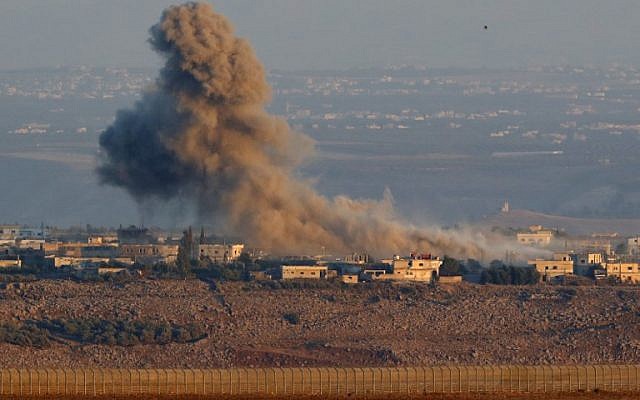Syria regime now on Israel’s doorstep after seizing Quneitra province
Assad’s forces raise flag in buffer zone bordering strategic Israeli Golan Heights following ouster of rebels
BEIRUT, Lebanon — Syrian government forces on Thursday raised the flag in the buffer zone separating Syrian-held territory from the Israeli Golan, the Syrian Observatory for Human Rights said.
Syria’s southwestern Quneitra province includes the Syrian Golan Heights, on the border of the territory held by Israel.
Here is some background about the province.
On Israel’s doorstep
The rocky plateau known as the Golan Heights overlooks Israel’s Galilee region and the Sea of Galilee to the south and west.
Israel took control of 1,200 square kilometers (460 square miles) of the Golan from Syria during the 1967 Six Day War and later annexed it in a move never recognized internationally.
The region is strategically important for Syria because it also controls a key highway from the Jordanian border to the capital Damascus.
Under rebel control
After decades of calm, tensions began flaring up in the Golan with the 2011 uprising against Syrian President Bashar Assad’s regime.
In March 2013, rebels fighting Assad’s forces launched coordinated attacks in the area and began seizing parts of the province.
The following year, rebel fighters and jihadists from Al-Qaeda’s Syria affiliate expanded their control, seizing the crossing between the Syrian section of the Golan and the part annexed by Israel.
Israel-Syria flash point
The area has witnessed fierce fighting between rebels and the regime, with fire occasionally hitting Israeli territory and prompting retaliation.
Israel in particular objects to the presence of regime-allied foreign fighters close to its borders: namely, Iranian forces or units from Lebanese terrorist group Hezbollah.
In September 2014, the Israeli army shot down a Syrian military plane over the Golan.
On May 10, 2018, Israel carried out dozens of raids against Iranian targets, responding to Iranian rockets fired at the Israeli-held section of the Golan.
On July 24, Israel said it shot down a Syrian plane that had entered its airspace over the Golan, a claim denied by Damascus, which said the plane was carrying out operations against Islamic State.
Regime advances
A “de-escalation” accord negotiated by Russia, the United States and Jordan saw southern Syria return to relative calm over the past year.
But this month it became a new front for advancing Syrian forces after they re-established their authority over most of neighboring Daraa province.
The regime launched an assault on Quneitra on July 15 with heavy bombardment.
Under pressure, the rebels agreed on July 19 to allow regime forces to take over, and began evacuating the next day.
